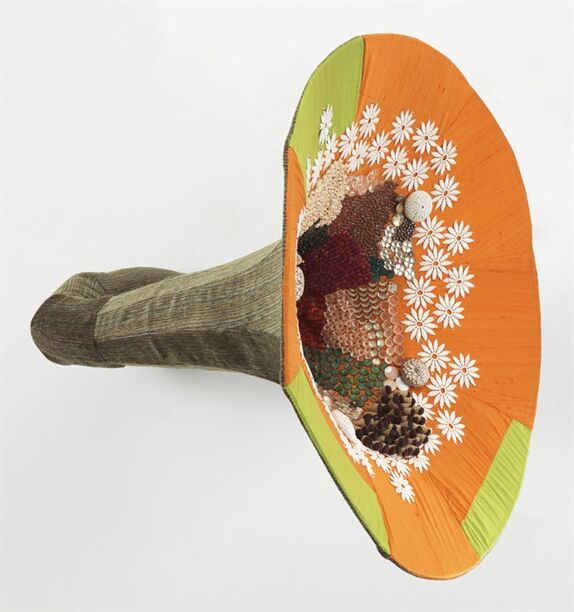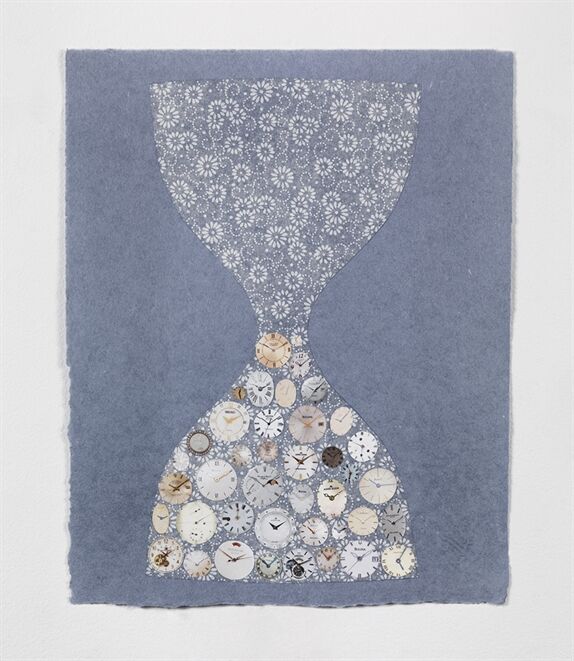
The Art of Connecting

by Jessica Barrett Sattell (MA 2015)
For Rachel Selekman (MFA 1993), a common goal weaves through her artmaking practice and a nearly 30-year career as both an artist and an arts administrator: connecting.
"It's an underlying theme of how I live my life, as well as a conceptual underpinning to my work," she explains. "I'm definitely a connector—I take so much pleasure in finding people jobs, telling them about exhibition opportunities, or finding them studio space."
This theme extends to the Brooklyn-based artist's recently published survey catalog and a solo show this fall at Rosemont College in Pennsylvania, both entitled Rachel Selekman: Making Connections.
After receiving her BFA, Selekman worked at Dolan/Maxwell gallery in her native Philadelphia and then moved to New York to head the gallery's Soho branch before deciding to pursue graduate studies at SAIC. She would visit Chicago for work and grew fond of the city. She applied for the MFA program through the school's Sculpture department and then met with James Zanzi, who encouraged her to shift to a path in Fiber and Material Studies. While there, she reveled in the many opportunities to study with women artists and solidify the themes that continue to inform her practice, working closely with Professors Anne Wilson and Joan Livingstone as well as Performance faculty Lynn Book.

"My significant takeaways were to be thoughtful in my decision making," she explains about her time at SAIC. "Particularly as a sculptor, you're using materials and techniques to make things, and those decisions shouldn't be arbitrary." This thoughtfulness is apparent in her sculptural works and works on paper that infuse warmth and familiarity into found forms that sometimes feel cold or impersonal. Curious conversations on human relationships, interactions, and intimacies emerge from everyday shapes such a watering can or the outline of a thread. She is currently working on new work informed by the milestone of her 50th birthday: a series of 50 small-scale works on paper that employ a lexicon surrounding the shape of the hourglass, as well as sculptures that "take stock" of her existing collection of materials and use resources that she already owns.
With her artistic background, she brings skills rooted in critical thinking, creativity, and problem solving to her work as an arts administrator. "Artists are always conceptualizing, and they're not afraid to share ideas, even if they get shot down. That brings tremendous value to their workplaces," she says. When she was Director of the Arts Center at the 92nd Street Y in New York, she found that she could readily understand the challenges of her staff of more than a hundred—many of whom were freelancers working multiple jobs—because she had once been in their shoes. That strengthened that working community's trust and deepened her commitment to helping fellow creatives. She is currently the Archivist and Project Coordinator of the Dan Flavin Estate, researching the work of the late artist and also cataloguing the extensive array of his personal library, among other responsibilities.

Selekman stays connected by dedicating time to help organize programs for the SAIC in New York alumni group. After expressing interest to the school in wanting to develop a local group, she started brainstorming ideas with Francesca Wilmott (MA 2010), Mayra Palafox (BFA 2009), and Sean Fader (MFA 2008). The four are working to arrange events that highlight the efforts of alumni through studio, workplace, and gallery visits, fostering opportunities for professional development. The group's most recent program, a panel at Kickstarter's headquarters featuring alumni who completed successful campaigns with the crowdsourced fundraising platform, was a well attended success.
She also gives back through regular donations to the Annual Fund, explaining that a past freelance job working with a philanthropic graphic designer inspired her to make contributions of her own. "I was so impressed by that generosity and consistent giving, and that exposed me to the possibility of being able to make contributions, even if it wasn't much, to organizations that meant a lot to me." Because she sees her time at SAIC as having been very important to her artistic development, the school is one of them.
Asked about her advice on how to get involved with enriching arts communities, Selekman replies: "There are endless opportunities in general—just pick one and dive in. We all have this common connection of SAIC, and if we meet and get to know each other, we can be great resources for one another. If everyone gives a little, it adds up to a lot. That's community at work."
